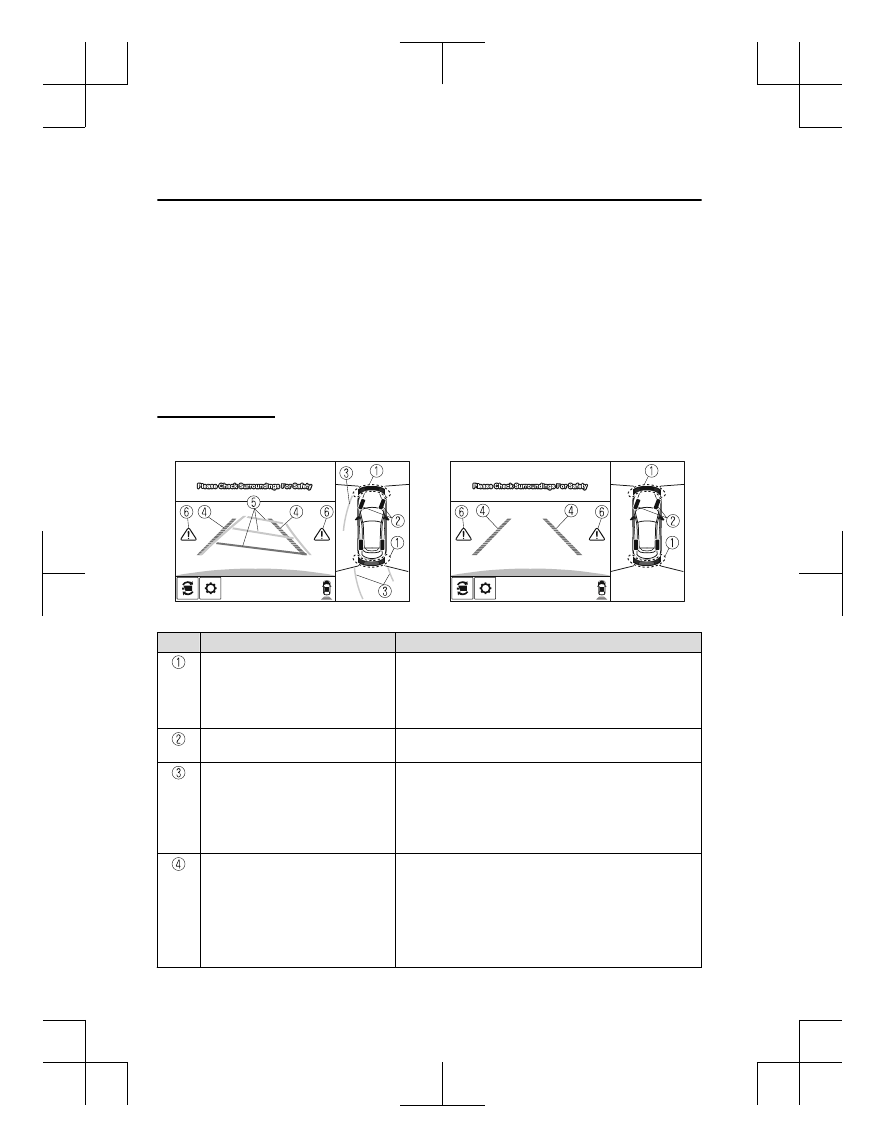Mazda CX-9 (2019 year). Manual - part 22

If an image containing an object with a conspicuous color is picked up by any of the
cameras, the whole screen may be affected and it may display in that color.
Obstructions displayed in the rear view may not display on the top view screen.
If the position or angle of each camera changes due to tilting of the vehicle, the image
may appear distorted.
Lines on the road may appear distorted at the seams where each of the camera images
merge.
The entire screen may appear bright/dark depending on the illumination level around
any of the cameras.
Viewing the screen
-a
-b
(When the projected vehicle
path line display is on)
(When the projected vehicle
path line display is off)
Display/Icon
Content
Parking sensor view
Displays the parking sensor detection condition when the
parking sensor is activated.
For details, refer to the parking sensor obstruction detection
indication and warning sound.
Refer to Parking Sensor System on page 4-220.
Tire icon
Indicates the tire direction. Moves in conjunction with the
steering wheel operation.
Projected vehicle path lines (amber)
Indicates the approximate projected path of the vehicle.
Moves in conjunction with the steering wheel operation.
a) Indicates the path where the rear wheels are expected to
travel.
b) Indicates the path where the outer side of the vehicle is ex‐
pected to travel.
Extended vehicle width lines and dis‐
tance guide lines (red/blue)
These guide lines indicate the approximate width of the vehi‐
cle and distance to a point measured from the rear of the vehi‐
cle (from the end of the bumper).
The red lines indicate the points up to about 0.5 m (20 in)
from the rear end of the bumper.
The blue lines indicate the points from about 0.5 m (20 in)
and up to 2 m (79 in) from the rear end of the bumper.
When Driving
i-ACTIVSENSE
4-184
CX-9_8HB2-EA-18G_Edition1
2018-5-11 13:09:27